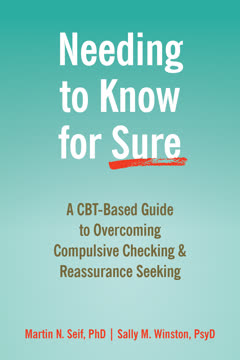Key Takeaways
1. The Illusion of Certainty Fuels Anxiety
Ultimately, knowing something for sure is really knowing something for sure enough.
Impossible goal. Absolute certainty is an illusion, not a fact. We often feel sure about everyday things, but rarely know for sure, and the relentless pursuit of this impossible goal creates immense distress. This need to know for sure is the major driver of anxiety.
Sensitized reactions. When certain "what if?" thoughts trigger our brain's alarm system (the amygdala), we become sensitized. This makes specific uncertainties feel intolerable and urgent, even if objectively low-risk, as our brain makes uncertainty appear dangerous.
Anxious thinking. This state distorts perception: no risk feels reasonable, thoughts blur with actions, worries become sticky, and the world appears dangerous. This fuels a desperate, often fruitless, need for reassurance, even for what are essentially false alarms.
2. Productive vs. Unproductive Reassurance
So, clearly, reassurance can come in two different types: one type is productive; the other is not.
Helpful reassurance. Productive reassurance is instructive, providing credible facts that resolve or help you live with remaining uncertainty. It sticks, leading to an action plan, and doesn't raise new doubts, like checking a bill once and moving on.
The trap's fuel. Unproductive reassurance, however, offers only temporary relief by creating an illusion of certainty. It's never enough, doesn't stick, and is primarily about reducing anxiety, not finding facts. This includes hidden, empty, and checking reassurance.
Self-defeating cycle. This type of reassurance, whether from others or self-talk, inadvertently reinforces the very doubts it tries to quell. It masquerades as helpful but keeps you stuck in an endless loop of worry and seeking more comfort.
3. The Reassurance Trap's Inner Voices
The interaction between Worried Voice and False Comfort drives the reassurance trap. Wise Mind is the way out of the trap.
Internal dialogue. Our minds have multiple "voices." Worried Voice generates doubts, "what ifs," and catastrophic possibilities, demanding absolute certainty and immediate relief. It is incredibly creative and urgent in its anxieties.
False comfort. False Comfort immediately tries to soothe Worried Voice with unproductive reassurance, arguments, or distractions. This temporary relief, however, has no staying power and only triggers more concerns from Worried Voice, perpetuating the trap.
Wise Mind's role. Wise Mind observes this interplay without judgment. It recognizes that doubts are natural, ultimate certainty is impossible, and most thoughts are not danger signals. It guides us to tolerate uncertainty and disengage from the unproductive cycle.
4. How the Trap Works: Negative Reinforcement and Paradoxical Effort
To be clear, it is not that you want to worry. And it is not at all obvious to you that the temporary relief is making you worry again.
Negative reinforcement. Unproductive reassurance provides immediate, temporary relief from anxiety. This reduction of discomfort negatively reinforces the worrying and doubting behavior itself, making it more likely to occur again, stronger and more frequently.
Paradoxical effort. The harder you try to suppress or eliminate doubts and uncertainty, the more persistent and louder they become. This "less is more" principle means that fighting uncertainty actually increases your awareness and distress about it.
Self-perpetuating cycle. These two mechanisms—negative reinforcement and paradoxical effort—create a self-reinforcing loop. The temporary relief from reassurance strengthens the worry, and the struggle to eliminate it makes it worse, tightening the trap.
5. Therapeutic Surrender is the Way Out (DEAF Steps)
Therapeutic surrender is most effective not when used to reduce anxiety, but rather as a way to be while you experience anxiety.
Radical shift. Therapeutic surrender is an attitude, not a technique to eliminate anxiety. It means rejecting the urge for unproductive reassurance and allowing the discomfort of uncertainty to exist, without trying to fix it.
The DEAF steps. This approach is summarized by DEAF:
- Distinguish the trap from a real emergency.
- Embrace the discomfort of uncertainty.
- Avoid reassurance (no checking, no seeking comfort).
- Float above the feeling and let time pass.
Retraining the brain. By consistently applying DEAF, you starve the trap of its fuel. Your brain learns that discomfort isn't danger and that reassurance isn't necessary for relief. This "rewires" neural pathways, reducing false alarms and the urge to check.
6. Intentional Practice Accelerates Recovery
Planned exposure—the practice of intentionally exposing yourself to the situations that trigger your need to know for sure—provides the opportunity for you to engage in intentional practice.
Beyond incidental. While incidental practice (applying DEAF in daily life) is helpful, intentional practice, or exposure, accelerates recovery. It involves deliberately triggering your reassurance trap to practice therapeutic surrender with full concentration.
Effective exposure. Successful exposure must be:
- Willingly done: Accepting discomfort as part of the learning process.
- Manageable: Starting with what you can handle, knowing anticipatory anxiety often overestimates future distress.
- Aimed at proper triggers: Focusing on the uncertainty itself, e.g., "I can never be sure whether my actions are offensive to God."
Practical applications. Block sources of reassurance (turn off phone, avoid social media). Make "Ulysses contracts" with friends/family to refuse reassurance. Engage in "Search and Destroy" to eliminate subtle, habitual unproductive reassurances.
7. Overcoming Obstacles to Surrender
Doubt is not a sign that something is wrong. Doubt is a sign that you are paying attention to all the signals, all the signs, all the information streaming into your senses.
Common hurdles. Recovery faces obstacles like the need for guarantees, believing current coping works, or seeing doubts as warnings. Recognize that your old methods perpetuate suffering, and a "leap of faith" is needed for change.
Unhelpful beliefs. Challenging beliefs like "I'm too fragile" (it's anticipatory anxiety, not fragility) or "I must be perfect" (perfectionism limits growth) is crucial. "Good enough" is a more realistic and effective goal than "perfect."
Co-compulsing. Be aware of the "co-compulsing dance" where loved ones inadvertently provide unproductive reassurance, reinforcing the trap. Share your journey and ask them to support your DEAF practice, even if it feels unkind initially.
8. Embrace a Life of "Maybe" and "Good Enough"
Not knowing for sure is the starting point for creative discovery.
Freedom from tyranny. As you practice therapeutic surrender, uncertainty becomes less of an enemy. You spend less time checking, make decisions with greater confidence, and are no longer embarrassed by seeking temporary comfort.
Increased resilience. Trusting your own judgment grows as you act on your "best guess" despite doubts. Taking reasonable risks, even with the possibility of mistakes, expands your world and builds resilience.
Unlocking creativity. Uncertainty is vital for creativity, fostering cognitive flexibility and new perspectives. A life lived with "maybe" and "good enough" is more fulfilling, joyful, and meaningful, even amidst life's inevitable challenges and losses.
Last updated:
Review Summary
Needing to Know for Sure receives mostly positive reviews, with readers praising its effectiveness in addressing anxiety and uncertainty. Many found the book's approach to mindfulness and acceptance helpful, particularly in breaking the cycle of reassurance-seeking behavior. Some reviewers appreciated the practical tools and examples provided, while others felt the book could have offered more solutions for complex situations. Overall, readers found the book informative and potentially life-changing, especially for those dealing with anxiety, OCD, or intrusive thoughts.
Similar Books
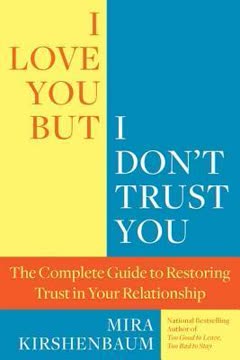
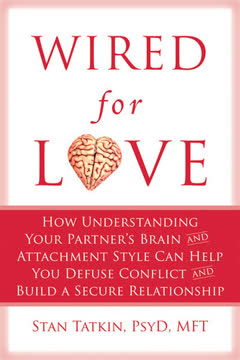
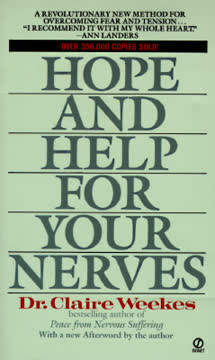
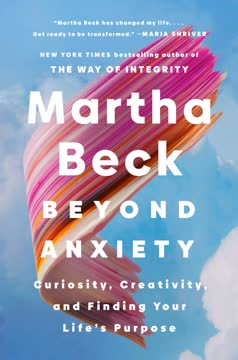
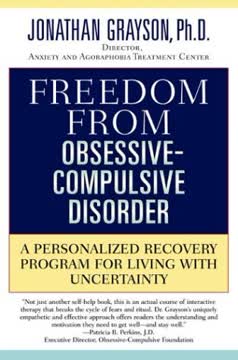

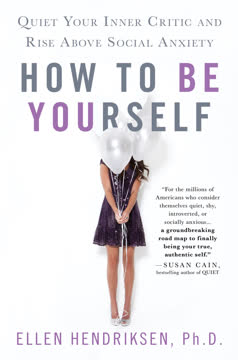
Download PDF
Download EPUB
.epub digital book format is ideal for reading ebooks on phones, tablets, and e-readers.
